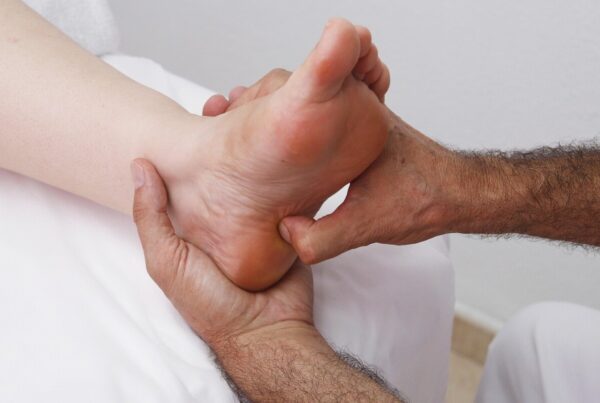As previously discussed in the prior blog, Bone Stress Injuries are a common running injury and are the unfortunate result of poor training programing, whether this be overtraining, poor biomechanics, diet or other reasons.
There is a continuum of pathology progression in bone stress injuries. These injuries start with a stress reaction which can progress towards a stress fracture and finally towards a complete bone fracture. As bone stress injuries progress along the continuum, the more significant the pathology and the longer it takes to recover. Early recognition of these injuries is critical to prevent symptom/pathology progression as to reduce the total time for recovery and period away from sport.
When insufficient time is given for the bone to adapt to external mechanical forces, an imbalance may occur between bone remodeling and micro-damage to the bone.
This accumulative micro-damage can continue to progress and result in further pathology.
There are three progressive stages of Bone Stress Injuries:
1. Bone strain/stress response: There are signs of bone stress on medical imaging but not experiencing clinical symptoms.
2. Stress reaction: Bone stress injury is severe enough to cause localised pain on the bone, which is aggravated with sporting activities, and tender on palpation.
3. Stress fracture: The final stage of the bone stress continuum when a fracture or break in the bone develops, which can be seen on medical imaging. Typically pain is very pronounced in a clear localised area, and often weight bearing is painful
Common Locations of Bone Stress Injuries:
Bone stress injuries and bone stress fractures are primarily seen in the lower limbs. Common locations of Bone Stress Injuries include:
● Tibia (shin bone)
● Fibula
● Metatarsal or carpal bones of the foot
● Medial malleolus of the ankle
● Neck of Femur (hip)
● Calcaneus (heel bone)
Risk Factors of Bone Stress Injuries:
The factors involved in the development of Bone Stress Injuries are related both to the load applied to a bone (Mechanical Load Factors) and to the ability of the bone to resist load (Biological/Skeletal Factors)
The Mechanical Load factors that influence how much and what load is applied to the bone include:
Training Features/Patterns
○ Intensity – The higher the intensity, the higher bone stress.
○ Duration of exercise can have an accumulative effect on the bone health.
○ Frequency – Inadequate recovery between exercise loading can increase the risk of developing an imbalance between micro-damage and remodeling.
Muscle Development
○ Strength capacity – Stronger muscle strength has a greater potential to
○ Endurance, Size and Volume
Biomechanics
○ Gait Mechanic features that may increase lower limb ground reaction forces/bone stress:
Pes cavus and planus feet
Leg length discrepancies
Greater external rotation at the hip
Greater average vertical loading (Increased vertical/height change while running may increase lower limb ground reaction force and bone stress)
Higher peak acceleration
Higher peak adduction, knee internal rotation, tibial internal rotation, rear foot eversion during gait (Tenforde, et al, 2016)
Equipment
○ Shoes
○ Orthotics
Environment
○ Training Surface
Grass vs Pavement/road
Treadmill – reduced ground reaction forces when compared with grass and pavement/road
The Sport Played
○ The demands of the sport, whether this be repeated forefoot running, cutting, jumping, landing
Biological and Skeletal Factors that affect the ability of the bone to resist load and prevent cumulative damage include:
Skeletal Properties
○ Mass, Density – HIgher quality of mass and density of the bone tissue will have a greater capacity to tolerate higher mechanical forces.
Current and Previous Physical activity History
○ History of participation in high impact multidirectional bone loading sports such as basketball or soccer have greater bone density and bone geometry compared with those who participate in repetitive low impact sports such as distance running (Tenforde et al, 2015).
Nutrition
○ Caloric intake/Low Energy Availability
Runners require adequate fuelling and energy availability for both the training workload and also their daily life function and physiological processes.
Athletes can underestimate the energy cost of basic daily physiological processes. This oversight can create an environment of low energy availability.
Low Energy Availability/RED-S
○ Calcium, Vitamin D
Calcium gives strength to the bone matrix.
The role of Vitamin D is to facilitate absorption of calcium to ensure bone growth and remodelling.
High prevalence of Vitamin D deficiency in runners, with low Vitamin D levels having been associated with increased incidence of BSI (Ruohola, et al, 2006).
Female runners who consumed less than 800mg calcium per day, were found to have a 600% greater stress fracture rate than female runners who consumed greater than 1500mg of calcium per day (Nattiv et al, 2013).
Previous Injury history
○ Both male and female runners with a prior stress fracture were shown to have heightened risk for further bone stress injury (Kelsey, et al 2007).
○ 10.3-12.6% of runners who have a history of BSI sustained a second BSI within 2yrs
If you are seeking some advice as to to improve your risk profile of developing a Bone Stress Injury come and see one of our experienced Physiotherapists here at Bend + Mend Physio in Sydney’s CBD.





